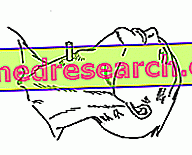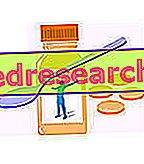Introduction
The increase in a woman's breast is a phenomenon that can be considered completely natural and that generally occurs during puberty, but not only.

However, it should not be forgotten that the size of the female breast can also be increased artificially by resorting to cosmetic surgery.
Breast and Puberty
Breast Augmentation in Puberty
Breast augmentation accompanies particular moments in the life of every woman, first of all puberty. During this epoch of psychic and bodily evolution, the two breasts undergo a significant increase (defined telarca ), while in the male they maintain the rudimentary characteristics typical of the prepubere period.
At the end of adolescence, it is possible to appreciate significant differences in volume between the breasts of various women. Generally, this variability is linked to a more or less generous deposition of fat in the pectoral fat pad; the development of glandular structures - a functional part of the breast as it is responsible for milk production - is instead less correlated to the volume of the breast. Also for this reason, the quantity of milk produced in the post-partum period is independent of the shape and size of the breast. For the same reason, it is a common experience to observe a significant reduction of the breasts in women who - starting from an overweight condition - undergo a rapid weight loss.
Breast size anomalies
When the hypertrophy or hypotrophy of the breast is rather accentuated, one speaks respectively of macromastia and micromastia (or mammary hypoplasia). These alterations can affect the breast in its glandular and adipose component, albeit with different proportions; pubertal macromastia, for example, is sustained mainly by a hypertrophy of the glands.
Role of Hormones
Role of Hormones in Breast Enhancement
The pigmentation of the nipple and its areola, the development of the glandular structures, as well as the breast augmentation that occurs during puberty, are linked to the increase in the levels of estradiol, the main female sex hormone. On the contrary, testosterone - which represents the male counterpart - leads these structures to atrophy. Not surprisingly, therefore, men with low testosterone levels are more likely to develop gynecomastia (abnormal development of breast size). Reversing the question, an atrophy of the female breast in adulthood can be accompanied by an increase in facial and body hair; this disorder, called hirsutism, is often caused by exaggerated androgen production. Even the small changes in volume and turgor of the breast during the menstrual cycle are attributable to the variations of the steroid-sexes in circulation. Many women, for example, feel a slight increase in their breasts, accompanied by an annoying tension, in the pre-menstrual period; this condition is caused by fluid retention, the result of the relative excess of estrogen compared to progesterone.
Phytoestrogens and estrogens
Phytoestrogens and Estrogens to Increase Breast Size
The positive action of estradiol on breast augmentation is exploited in the production of various phytoestrogen-based products, dedicated to that vast female audience eager to enhance their cleavage without resorting to a scalpel. In reality, as we have had the opportunity to analyze during the articles dedicated to phytoestrogens and soy isoflavones, the similar estrestrogenic effect of these substances is about a thousand times lower than their endogenous counterpart. Therefore, to expect to increase the size of one's breast by resorting to such products is somewhat, I would dare to say unconsciously, optimistic. On the other hand, one cannot even think of taking synthetic estrogens, because - in addition to an increased risk of breast cancer - hormonal disruption would cause important problems for the whole organism. It should be emphasized that some women unintentionally get breast augmentation by taking certain types of birth control pills containing estrogen.
Breast and Pregnancy
Breast Enhancement in Pregnancy
During pregnancy, the increase in plasma levels of estrogen and progesterone, thanks to ovarian activity and especially to placental activity, leads to hypertrophy of the breasts; we are witnessing in particular the simultaneous development of the secreting alveoli (progesterone), of the adipose tissue, of the galactophore ducts and of their ramifications (estrogens). The fact that these hormones, while inducing hypertrophic changes in the breast, inhibit the secretion of milk is singular; the latter will instead be stimulated by the hormone prolactin.
Breast

- Breast augmentation, if breast size increases.
- Reduction mammoplasty, if it reduces the size of the breast.
- Mastopexy, if it aims to lift a sagging breast.



